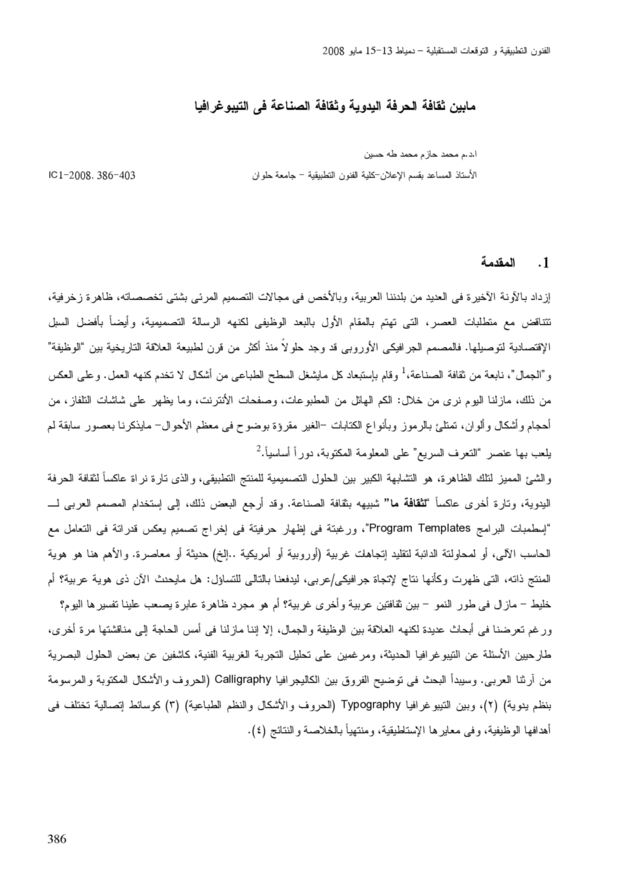The New Arabic Type Classification System
Contemporary Arabic designers are concerned with the lack of a comprehensive classification system for Arabic typefaces. Despite the spread of printing presses in the Arab world in the first half of the 20th century, typographers and design scholars have been working and communicating without any classification system. This deficiency has led to misinformation within graphic design practices and education. With over a thousand newly designed Arabic fonts and the challenges presented by courses such as Arabic font design, typography, and editorial design, there is now a demand for a clear and user-friendly classification system.
Most available classifications are limited to the 18th or 19th-century Arabic scripts and do not include typefaces. Attempts to classify Arabic typefaces based on historical periods have led to confusion and do not help with newly designed typefaces. This paper aims to establish an agreeable classification system based mainly on form language to facilitate communication between all parties involved in type and letterforms, such as designers, typographers, type designers, calligraphers, printers, compositors, students, manufacturers, scholars, and engineers.
Chapter 2 will briefly discuss previous categories and terms used in other classifications, questioning the misuse of terms such as "Hybrid," "Neo," "Post-modern," "Black headlines," and "Grotesk." Chapter 3 will explain the new classification system's resources, method, and tools used based on arguments raised by Elin K. Jacob (2004), the prototype theory, John Downer's explanations for the meaning of "originality" of typefaces (2003), Kühnel's classification (1972), and "VOX-ATYPI" classification for Latin typefaces. The latter will assist with comparing characteristics, creating new categories, and identifying the originality grades for the Arabic typefaces.
In Chapter 4, the final list of classes and their subordinates will be established and supported with a short description for each generic. The research paper will conclude with an infographic for the main classes and their subordinates.
